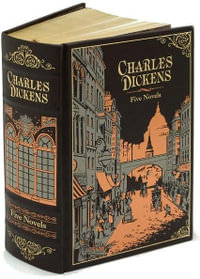This is an exquisite leatherbound edition of Nathaniel Hawthorne's historical study of guilt and sin. This version of the landmark of American literature features a satin-ribbon bookmark, distinctive stained edging and decorative marbled endpapers. In seventeenth-century Boston, Hester Prynne shoulders the scorn of her fellow Puritan townsfolk for bearing a child out of wedlock. For her refusal to name the father of her daughter Pearl, Hester is made to wear a scarlet 'A' stitched conspicuously upon her dress. But though she bears the stigma of the shame her peers would confer upon her, others feel the guilt for her transgression more acutely, notably the pious Reverend Arthur Dimmesdale, the confessor with whom Hester and Pearl's destinies are intimately bound up.
First published in 1850, Nathaniel Hawthorne's historical study of guilt and sin has since been lauded as the most important work of fiction by its distinguished author and a landmark of American literature. This exquisite collectible edition features an elegant bonded-leather binding, a satin-ribbon bookmark, distinctive stained edging, and decorative marbled endpapers. It's the perfect gift for book-lovers and an artful addition to any home library.
About the Author
Nathaniel Hawthorne was a 19th century American novelist and short story writer. He is seen as a key figure in the development of American literature for his tales of the nation's colonial history.
Shortly after graduating from Bowdoin College, Hathorne changed his name to Hawthorne. Hawthorne anonymously published his first work, a novel titled Fanshawe, in 1828. In 1837, he published Twice-Told Tales and became engaged to Sophia Peabody the next year. He worked at a Custom House and joined a Transcendentalist Utopian community, before marrying Peabody in 1842. The couple moved to The Old Manse in Concord, Massachusetts, later moving to Salem, the Berkshires, then to The Wayside in Concord. The Scarlet Letter was published in 1850, followed by a succession of other novels.
A political appointment took Hawthorne and family to Europe before returning to The Wayside in 1860. Hawthorne died on May 19, 1864, leaving behind his wife and their three children. Much of Hawthorne's writing centers around New England and many feature moral allegories with a Puritan inspiration. His work is considered part of the Romantic movement and includes novels, short stories, and a biography of his friend, the United States President Franklin Pierce.


















